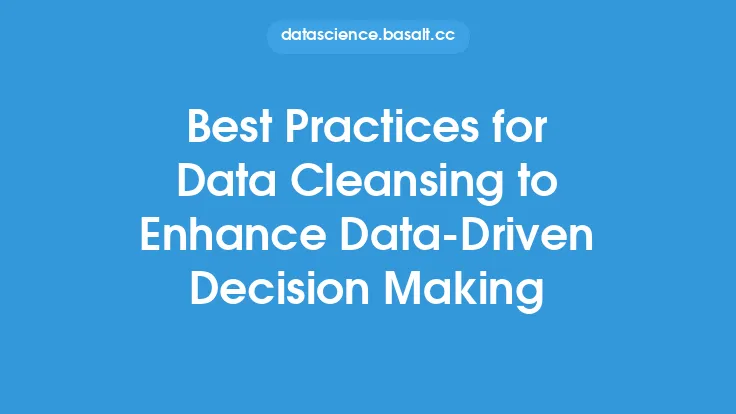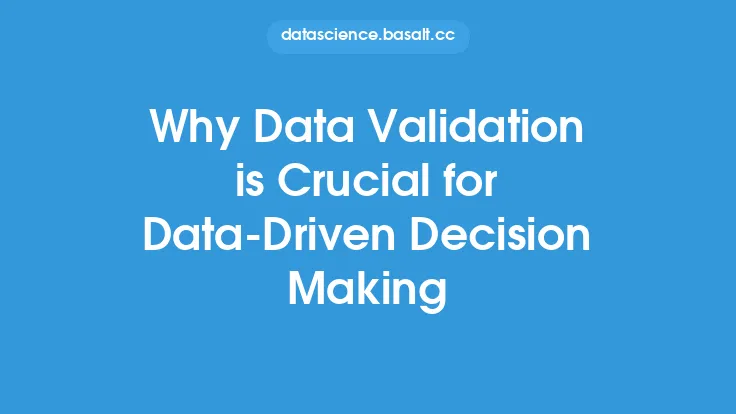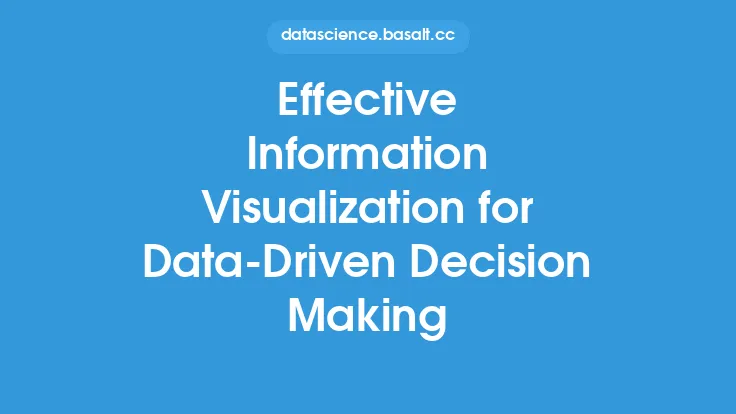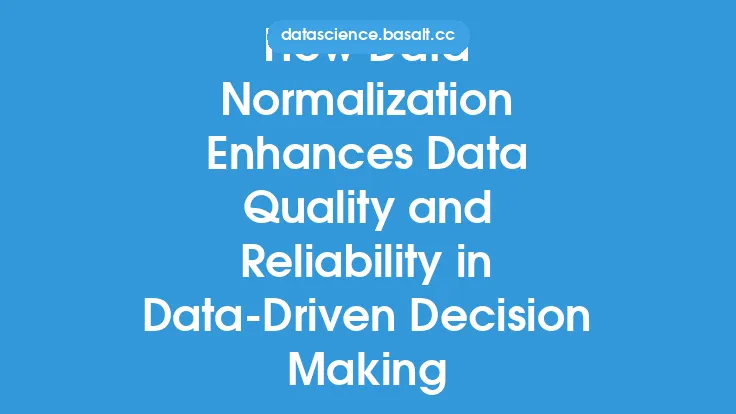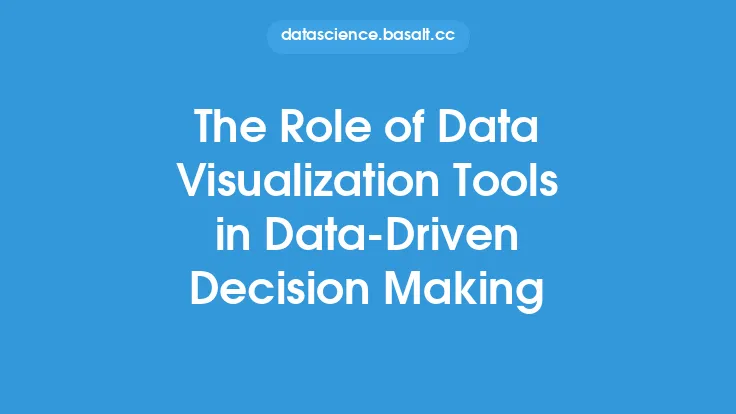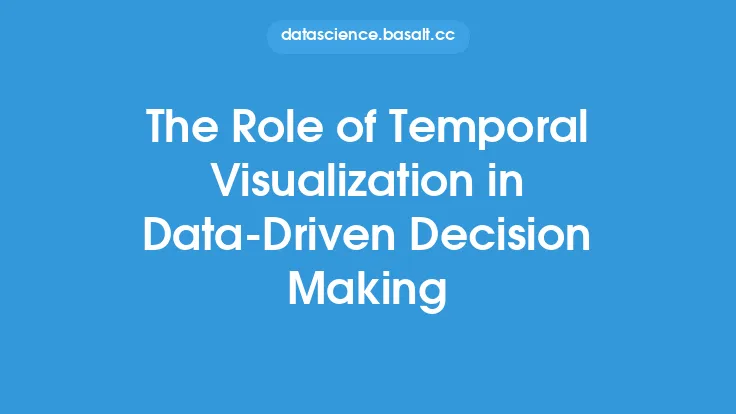In today's fast-paced business landscape, organizations are constantly seeking ways to stay ahead of the competition and make informed decisions that drive growth and success. One key strategy that has emerged as a game-changer is data-driven decision making. By leveraging data and analytics, organizations can uncover hidden insights, identify trends, and make informed decisions that drive business outcomes. However, to reap the benefits of data-driven decision making, organizations must adopt best practices that ensure the effective collection, analysis, and interpretation of data.
Introduction to Data-Driven Decision Making
Data-driven decision making is a approach that involves using data and analytics to inform business decisions. This approach is based on the idea that data can provide valuable insights into business operations, customer behavior, and market trends, which can be used to make informed decisions. By using data and analytics, organizations can reduce the risk of making decisions based on intuition or anecdotal evidence, and instead make decisions that are grounded in facts and evidence. Data-driven decision making involves a range of activities, including data collection, data analysis, and data interpretation, as well as the development of strategies and tactics to implement decisions.
Key Principles of Data-Driven Decision Making
There are several key principles that underpin effective data-driven decision making. First, organizations must have a clear understanding of their business goals and objectives, and must be able to define what success looks like. This involves identifying key performance indicators (KPIs) and metrics that will be used to measure success. Second, organizations must have access to high-quality data that is relevant to their business goals and objectives. This involves collecting data from a range of sources, including internal systems, customer feedback, and market research. Third, organizations must have the skills and expertise to analyze and interpret data, and to identify insights and trends. This involves using statistical models, data visualization tools, and other techniques to uncover hidden patterns and relationships in the data.
Data Collection and Management
Data collection and management are critical components of data-driven decision making. Organizations must have systems and processes in place to collect, store, and manage data from a range of sources. This involves using data warehousing and business intelligence tools to integrate data from different systems and sources, and to provide a single, unified view of the business. It also involves implementing data governance policies and procedures to ensure that data is accurate, complete, and consistent. Data governance involves defining roles and responsibilities for data management, establishing data quality standards, and implementing processes for data validation and verification.
Data Analysis and Interpretation
Data analysis and interpretation are also critical components of data-driven decision making. Organizations must have the skills and expertise to analyze and interpret data, and to identify insights and trends. This involves using statistical models, data visualization tools, and other techniques to uncover hidden patterns and relationships in the data. It also involves using data mining and machine learning algorithms to identify complex patterns and relationships in the data. Data analysis and interpretation involve a range of activities, including data cleaning and preprocessing, data transformation and feature engineering, and model building and evaluation.
Communication and Collaboration
Communication and collaboration are essential for effective data-driven decision making. Organizations must be able to communicate insights and findings to stakeholders, including business leaders, customers, and employees. This involves using data visualization tools and other techniques to present complex data insights in a clear and concise manner. It also involves collaborating with stakeholders to identify business problems and opportunities, and to develop strategies and tactics to address them. Communication and collaboration involve a range of activities, including stakeholder engagement, requirements gathering, and solution development.
Implementation and Evaluation
Implementation and evaluation are critical components of data-driven decision making. Organizations must be able to implement decisions and strategies based on data insights, and to evaluate their effectiveness. This involves using agile methodologies and other techniques to rapidly prototype and test solutions, and to iterate and refine them based on feedback and results. It also involves using metrics and KPIs to measure the effectiveness of decisions and strategies, and to identify areas for improvement. Implementation and evaluation involve a range of activities, including solution development, testing and validation, and deployment and maintenance.
Common Challenges and Pitfalls
Despite the benefits of data-driven decision making, there are several common challenges and pitfalls that organizations must be aware of. One common challenge is data quality, which can be affected by issues such as missing or duplicate data, inconsistent formatting, and errors in data entry. Another common challenge is data silos, which can make it difficult to integrate data from different systems and sources. Organizations must also be aware of biases and assumptions in data analysis and interpretation, which can lead to incorrect or misleading insights. Finally, organizations must be aware of the risks of over-reliance on data, which can lead to a lack of creativity and innovation in decision making.
Best Practices for Data-Driven Decision Making
To reap the benefits of data-driven decision making, organizations must adopt best practices that ensure the effective collection, analysis, and interpretation of data. One best practice is to establish a data-driven culture, which involves encouraging a culture of data-based decision making throughout the organization. Another best practice is to invest in data management and analytics capabilities, which involves using data warehousing and business intelligence tools to integrate and analyze data. Organizations must also establish clear goals and objectives, and must be able to define what success looks like. Finally, organizations must be able to communicate insights and findings to stakeholders, and must be able to collaborate with stakeholders to identify business problems and opportunities.
Future of Data-Driven Decision Making
The future of data-driven decision making is exciting and rapidly evolving. One trend that is emerging is the use of artificial intelligence and machine learning to analyze and interpret data. These technologies have the potential to uncover complex patterns and relationships in data, and to identify insights and trends that may not be apparent through traditional analysis techniques. Another trend is the use of cloud-based data management and analytics platforms, which can provide organizations with rapid access to data and analytics capabilities. Finally, there is a growing recognition of the importance of data ethics and governance, which involves ensuring that data is collected, stored, and used in a responsible and transparent manner. As data-driven decision making continues to evolve, organizations must be aware of these trends and must be able to adapt and innovate to stay ahead of the competition.
